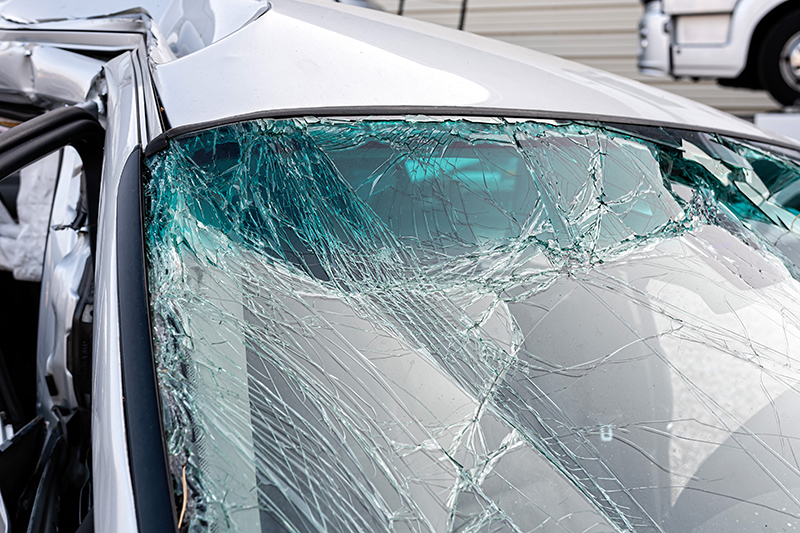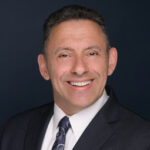Whether commuting to work, running errands, or exploring the beautiful landscapes of Oregon, we often find ourselves on the road.
With the convenience of transportation comes the sobering reality of car accidents, a topic that impacts us all. We’ll delve into the frequency of car accidents in Oregon, exploring the factors that contribute to these incidents and the implications for road safety.
Oregon’s Car Accident Statistics
According to recent reports, Oregon experiences a significant number of car accidents every year.
- According to the Oregon Department of Transportation, Oregon has seen a significant rise in car accident fatalities in the last decade. In the latest reporting year, there were 552 fatal crashes and 23,729 non-fatal crashes with injuries. These accidents involved bicyclists, pedestrians, and motorcyclists. Drivers aged 15-20 were involved in almost 3,500 crashes and they resulted in 599 deaths and around 35,945 serious injuries. [1]
- The number of traffic fatalities in Oregon rose from 507 in 2019 to 599 in 2021, as reported by OPB. [1]
- During the same period, 35,945 individuals were injured in car accidents, highlighting the impact of these incidents on individuals and families. [1]
- The number of Oregon traffic fatalities per year increased by 73% from 2010 to 2022. [2]
- Oregon has a fatal car accident per population rate of 12 incidents per 100,000 people. [3]

Types of Car Accidents Commonly Seen in Oregon
In Oregon, several types of car accidents are commonly seen due to various factors such as weather conditions, road layouts, and driver behaviors.
Here are some of the most common types:
- Collisions with Wildlife: Particularly on rural highways, collisions with animals such as deer can occur, especially during dusk and dawn when visibility is lower.
- Head-On Collisions: These are among the most severe accidents and typically happen when vehicles traveling in opposite directions collide, often due to factors like impaired driving or unsafe passing.
- Rear-End Collisions: Rear-end collisions occur when a vehicle strikes the one in front of it, often due to sudden stops, tailgating, or distracted driving.
- Side-impact Collisions (T-bone Collisions): When the front of one vehicle collides with the side of another, it is considered a T-bone collision. These often occur at intersections or when one driver fails to yield.
- Single-Vehicle Crashes: These accidents involve only one vehicle and can result from factors like excessive speed, loss of control, or swerving to avoid obstacles.
Factors Contributing to Car Accidents in Oregon
Several factors contribute to car accidents in Oregon. Some of the most common causes include:
- Aggressive Driving: Behaviors such as tailgating, weaving in and out of traffic, and road rage can escalate situations and increase the likelihood of accidents.
- Alcohol-Related Accidents: Despite awareness campaigns, driving under the influence of alcohol or drugs remains a contributing factor in Oregon’s accidents.
- Distracted Driving: One of the leading causes of accidents, distractions like texting, talking on the phone, eating, or adjusting navigation systems can take a driver’s attention away from the road.
- Failure to Yield: Accidents often occur when drivers fail to yield the right of way at intersections, ramps, or merge points, leading to collisions with other vehicles.
- Fatigue: Driving while fatigued can impair a driver’s concentration and reaction time, making them more prone to accidents, especially during long trips.
- Inexperienced Drivers: Lack of experience, particularly among young or newly licensed drivers, can contribute to accidents due to errors in judgment or poor decision-making.
- Poor Road Conditions: Potholes, uneven surfaces, lack of signage, and poorly maintained roads can contribute to accidents, especially if drivers are not prepared for such conditions.
- Running Red Lights and Stop Signs: Disregarding traffic signals and signs can result in intersection accidents and side-impact collisions.
- Speeding and Reckless Driving: Exceeding the posted speed limit reduces reaction time and increases the severity of accidents, especially in areas with heavy traffic or challenging road conditions.
- Weather-Related Accidents: Oregon’s weather can contribute to car accidents, with rain, snow, and fog creating slippery conditions and reduced visibility.

Most Dangerous Roads in Oregon
Oregon has its fair share of dangerous roads that are prone to car accidents. While overall car accident rates in Oregon are lower than the national average, certain roads have gained notoriety for being particularly hazardous. [4]
1. SW Canyon Road at Highway 217 interchange (Beaverton)
Over the past three years, Oregon’s most dangerous stretch of roadway experienced 90 crashes. None of the wrecks were fatal, although 37 resulted in injury.
2. Sunset Highway approaching Vista Ridge Tunnels (Portland)
ODOT records show that there have been 187 crashes along the Sunset Highway in the past three years. 98 of these accidents resulted in property damage only, which can be particularly problematic on this heavily trafficked road.
3. Oregon 213 at Beavercreek Road
In the last three years, emergency crews have responded to 87 crashes at this intersection, with nearly half (39) being injury crashes.
4. SE 82nd Ave. near SE Powell Blvd. (Portland)
The busy commercial stretch of Southeast 82nd Avenue near Powell Boulevard in Portland has two lanes in each direction and experienced 92 crashes among cars traveling north or south on 82nd in the past three years.
5. SW Beaverton Hillsdale Highway at the Highway 217 interchange (Beaverton)
Over the past three years, there have been 104 crashes involving cars traveling east or west on Southwest Beaverton Hillsdale at the Highway 217 interchange. Half of those individuals were injured and there was only property damage.
What Should You Do if You Are Involved in a Car Accident in Oregon?
Being in a car accident can be a stressful and overwhelming experience, especially if you’re unsure of what steps to take next. To ensure your safety, protect your rights, and navigate the aftermath effectively, take the following steps after a car accident in Oregon:
- Check for injuries: In case of injury, contact emergency medical services immediately.
- Move your car: If it is feasible, please move your vehicle to the side of the road and activate your hazard lights.
- Call the police: Call 911 to report the accident and request medical help.
- Remain at the scene: Stay at the accident scene until a police officer arrives.
- Exchange information: Both drivers should exchange necessary information, including license, registration, and insurance details.
- Take photos: Take pictures of all vehicles involved, road conditions, and vehicle damage.
- Contact your insurance: Contact your insurance provider at your earliest convenience.
- File a report: File an incident report with the police and the Oregon DMV.
- Schedule a medical examination: Go to the doctor to get checked, even if you do not think you are injured.
- Keep records: Keep all documents related to the accident.
- Consider legal advice: If the accident results in significant injuries or disputes, consider consulting with a car accident attorney for guidance on your rights and legal options.

Can You File a Car Accident Claim if You Were At Fault in Oregon?
Yes, you can still file a personal injury lawsuit in Oregon if you are 50% or less at fault for a car accident, even though Oregon is a “fault” or “tort” state. Your award will be reduced by your percentage of fault, as long as it’s not greater than the other parties’ fault. If you are 51% or more at fault, you cannot recover damages.
Oregon also has mandatory Personal Injury Protection (PIP) insurance, which covers medical expenses and other costs for you, your passengers, and pedestrians or bicyclists involved in a car accident, regardless of who was at fault. Covered expenses are limited to a maximum of $15,000, and must be incurred within two years of the accident. [5]
Ways to Stay Safe on Oregon Roads
To reduce the risk of being involved in a car accident in Oregon, drivers can take several precautions:
- Avoid Distractions: Keep your focus on the road by avoiding distractions like texting, talking on the phone, eating, or grooming while driving.
- Buckle Up: Always wear your seatbelt and ensure that all passengers, including children, are properly restrained with seatbelts or child safety seats.
- Follow Traffic Rules: Obey traffic signals, signs, and lane markings. Yield the right of way when required, and use turn signals.
- Keep a Safe Distance: Keep a safe following distance from other vehicles to allow for reaction time and avoid rear-end collisions.
- Obey Speed Limits: Follow posted speed limits and adjust your speed based on weather, traffic, and road conditions to maintain control of your vehicle.
- Practice Defensive Driving: Anticipate potential hazards, remain vigilant of other driver’s actions, and be prepared to react quickly and safely.
- Prepare for Weather: Be prepared for Oregon’s changing weather conditions. Keep your vehicle’s tires, brakes, and lights in good condition, and carry emergency supplies like a flashlight, water, and blankets.
- Respect Vulnerable Road Users: Watch out for pedestrians, cyclists, and motorcyclists. Give them ample space and be mindful of their presence on the road.
- Stay Sober: Never drive under the influence of alcohol or drugs. Designate a sober driver or use alternative transportation if you plan to drink.

Impact of Car Accidents on Insurance Companies
Car accidents are unfortunately a common occurrence in Oregon. According to the Oregon Department of Transportation, there were over 45,775 reported car crashes in the state in 2021 alone. This translates to an average of more than 125 accidents per day. [1]
The impact of car accidents on insurance companies can be significant. Insurance companies must pay out claims for property damage, medical treatment expenses, and other costs resulting from accidents. This can lead to higher insurance premiums for drivers across the state.
To prevent auto accidents and reduce the impact on insurance companies, all drivers in Oregon need to follow traffic laws, drive cautiously, and stay focused behind the wheel. By taking these precautions, everyone can help contribute to safe roads in Oregon.
If you or a loved one has been injured in a car accident, contacting Goldberg & Loren’s experienced personal injury attorney can help you seek financial compensation.
Sources:
[1] 2021 Oregon Traffic Crash Summary. (n.d.). Oregon Department Transportation. Retrieved June 2023, from https://www.oregon.gov/odot/Data/Documents/Crash_Summary_2021.pdf
[2] Sierra, A. (2023, November 28). Oregon data shows traffic deaths on the rise across the state. Opb. https://www.opb.org/article/2023/11/28/oregon-data-shows-traffic-deaths-increasing
[3] What state has the most car accidents? (n.d.). Retrieved March 12, 2024, from https://www.thezebra.com/resources/driving/car-accidents-by-state
[4] Here are the 10 most dangerous roads in Oregon. (n.d.). Retrieved February 7, 2018, from https://www.kgw.com/article/news/investigations/here-are-the-10-most-dangerous-intersections-in-oregon/283-515379419
[5] ORS 742.524 – Contents of personal injury protection benefits. (n.d.). https://oregon.public.law/statutes/ors_742.524

